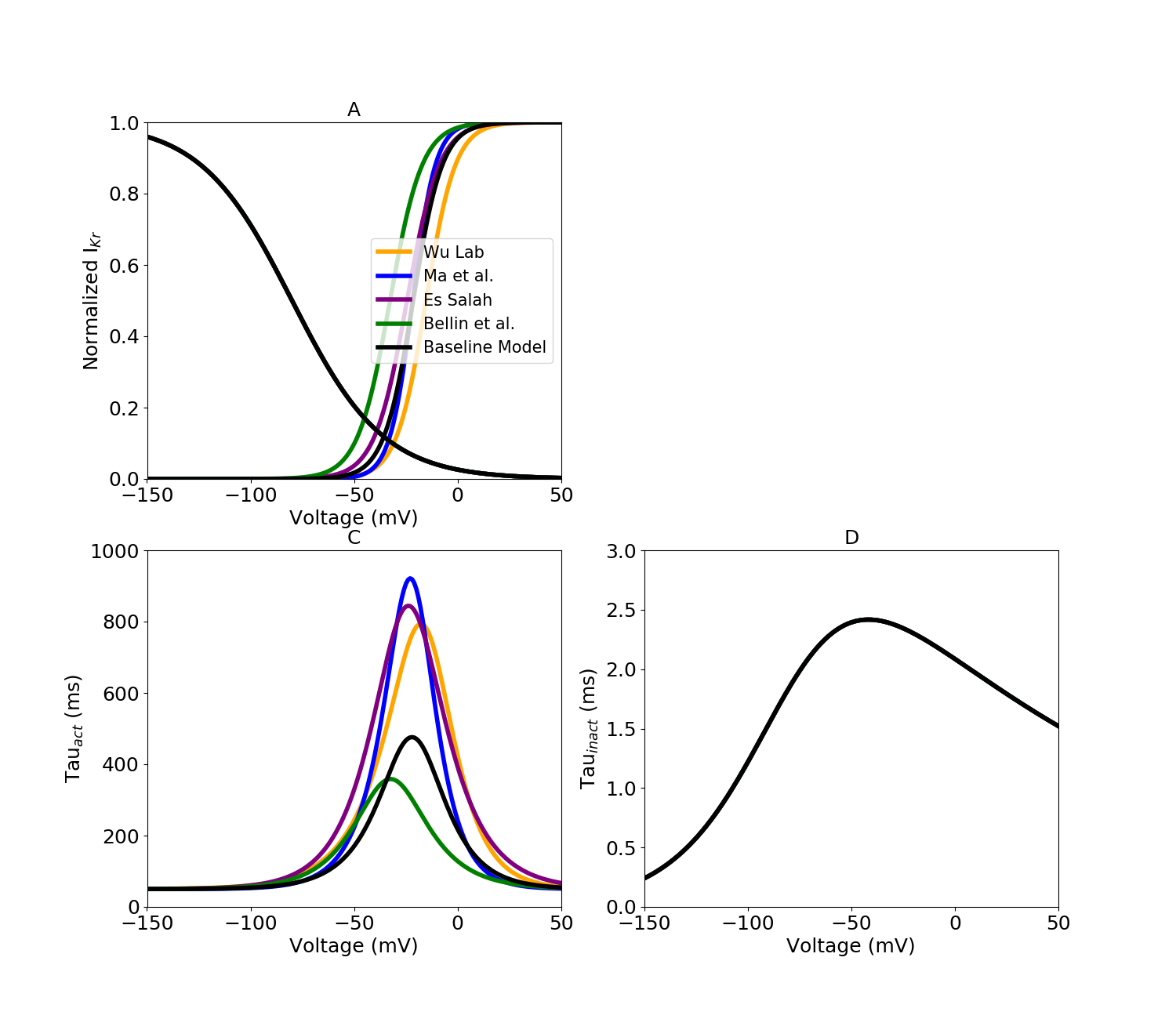fig5-new.py
About this model
| Original publication: | |
|---|---|
| Kernik et al. (2019): "A computational model of induced pluripotent stem-cell derived cardiomyocytes incorporating experimental variability from multiple data sources" J Physiol. 2019 Sep 1; 597(17): 4533-4564. | |
| DOI: | https://dx.doi.org/10.1113%2FJP277724 |
Figure 05
Rapid delayed rectifier potassium current (IKr) model optimization
The voltage dependent activation and inactivation gating variables were modeled here. The single exponential voltage‐dependent rate constant model was optimized to fit the voltage dependence of IKr inactivation in the ten Tusscher 2004 model. The result of inactivation gating is shown in Fig. 5 A and D. Activation gating model were fit to four different data for multiple labs; Ma et al. (2011), Garg et al. (2018), Bellin et al. (2013) and Es-Salah-Lamoureux et al. (2016). Parameters in Ma et al. (2011), Garg et al. (2018) and Es-Salah-Lamoureux et al. (2016). model, were optimized using the time constant activation of Ma et al. (2011). Time constant activation in Bellin et al. (2013) were used in the model. (Fig. 5 C)
act_inact.cellml is the main CellML file which show the probability of potassium channel being open orclose. Its associated SED-ML file contains all the simulation settings. All the CellML files and SED-ML files need to be download in a same folder (act_inact, gating, parameter, unit) as well as python script (fig5-new.py). In the python script, required SED-ML file is loaded into the script and by running the code following figure is reproduced. fig5-new.py is used to generate the simulation and reproduces the graph shown in Figure 5 in the original study. In order to reproduce Figure 5, once all the files are downloaded to the same folder, execute the following script from the command line (command prompt):
cd [PathToThisFile]
[PathToOpenCOR]/pythonshell fig5-new.py

A, optimized activation with dataset-specific model fits. Different colour represent experimental iPSC-CM data from multiple laboratories. C, Time constant of IKr activation gate. D, Time constant of IKr inactivation gate.
